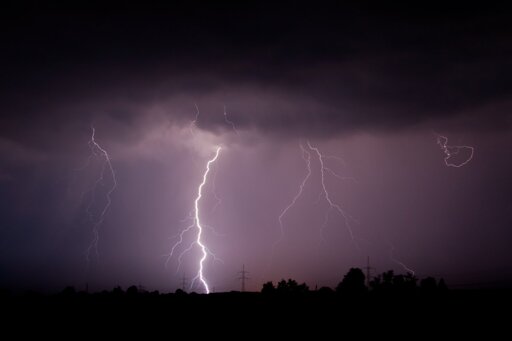Outdated lightning safety advice is making the rounds again, prompting experts to speak up about what actually keeps you safe in a storm.
If you get caught outdoors during a lightning storm, safety experts once recommended adopting a crouched position to lessen your chances of being struck by lightning. It turns out, however, that the position doesn’t make you any safer.
“If you’re caught outside during a thunderstorm, the best plan of action is to move as fast as you can to a safer place,” John Jensenius, a lightning safety specialist with the NLSC, said in a statement released by Loehr Lightning Protection Co. “The sooner you get to a safe place, the lower your risk. Crouching only prolongs the risk of being struck,” explained Jensenius.
The crouch isn’t just outdated—it was debunked almost 20 years ago. But despite the fact that the NLSC and the National Weather Service stopped recommending the crouch in 2008, institutions such as the American Hiking Society and the city of Bellmead in Texas continue to include it in their lightning safety guidelines.



Height has basically nothing to do with it - it’s the accumulation of static charge in a conductor which produces the dielectric breakdown of air. Even though the human body is a relatively poor conductor, it is still a much better conductor than the ground itself. It makes no difference if your head is 6 feet above the ground or three feet above the ground - you will accumulate charge the same way.
Also most strikes on people are not direct strikes, but people being close enough to to the primary plasma channel to provide another path to ground. The electric potential required to produce an arc from 5 feet away is orders of magnitude lower than it is from 3 miles up.
That’s the very reason why it is indeed helpful to crouch when there is no safety nearby. Putting your feet close together reduces the step voltage (the voltage across your feet), making it less likely that a deadly current flows through your heart when there are strong potentials on the ground.